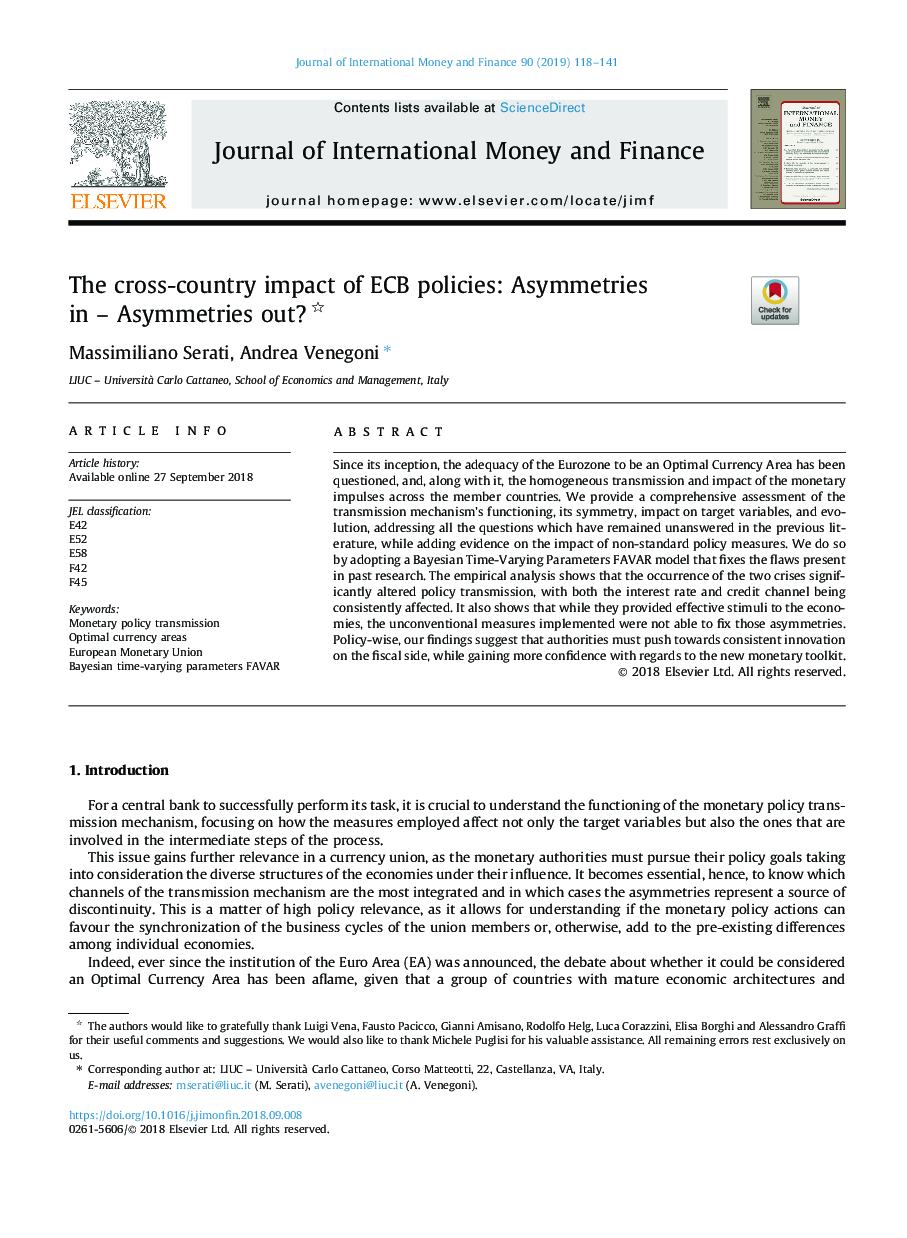| Article ID | Journal | Published Year | Pages | File Type |
|---|---|---|---|---|
| 11020453 | Journal of International Money and Finance | 2019 | 24 Pages |
Abstract
Since its inception, the adequacy of the Eurozone to be an Optimal Currency Area has been questioned, and, along with it, the homogeneous transmission and impact of the monetary impulses across the member countries. We provide a comprehensive assessment of the transmission mechanism's functioning, its symmetry, impact on target variables, and evolution, addressing all the questions which have remained unanswered in the previous literature, while adding evidence on the impact of non-standard policy measures. We do so by adopting a Bayesian Time-Varying Parameters FAVAR model that fixes the flaws present in past research. The empirical analysis shows that the occurrence of the two crises significantly altered policy transmission, with both the interest rate and credit channel being consistently affected. It also shows that while they provided effective stimuli to the economies, the unconventional measures implemented were not able to fix those asymmetries. Policy-wise, our findings suggest that authorities must push towards consistent innovation on the fiscal side, while gaining more confidence with regards to the new monetary toolkit.
Related Topics
Social Sciences and Humanities
Economics, Econometrics and Finance
Economics and Econometrics
Authors
Massimiliano Serati, Andrea Venegoni,
